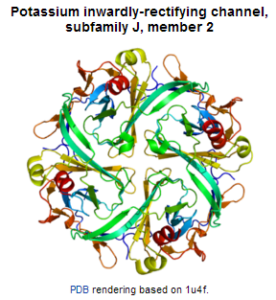Andersen-Tawil Syndrome (ATS)
What is Andersen-Tawil Syndrome?
Andersen-Tawil syndrome (ATS) is a rare disorder which is estimated to affect 1 in one million people. ATS has three distinct characteristics, episodes of muscle weakness (periodic paralysis), changes in heart rhythm (arrhythmia), and developmental abnormalities. The most common changes affecting the heart are ventricular arrhythmia, which is a disruption in the rhythm of the heart’s lower chambers, and long QT syndrome.
The condition is caused by a lack of control over the channel which allows entry and exit of potassium ions into cells. The specific name for this is a voltage gated, inward rectifying potassium channel or Kir2.1 channel. These are found predominantly in skeletal muscle, heart and brain cells. The incorrectly functioning channels ‘leak’ or fail to bind with another protein which regulates its activity this means that their electrical charge is not controlled properly. These cells lose their charge and take a long time to get it back. The individual experiences this as muscle weakness or paralysis. For more information about Anderson-Tawil Syndrome click here.
Image sourced from wikipedia http://en.wikipedia.org/wiki/Kir2.1 20-1-2014

